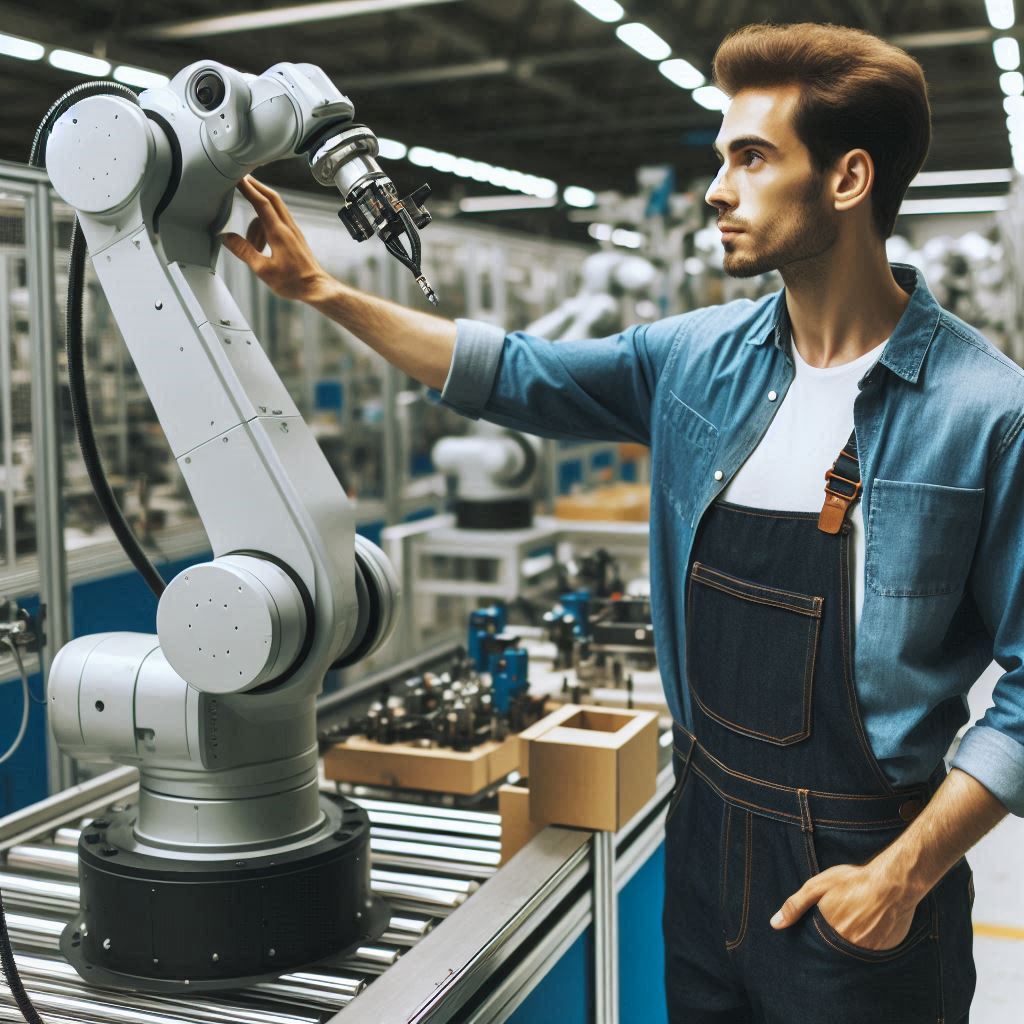
Developing Industry 4.0
Industry 5.0, although still at an early stage of development, is a concept that predicts the next evolution in the industrial sector, following Industry 4.0. While Industry 4.0 focuses on automation, digitalization and the use of advanced technologies such as IoT, AI and big data, Industry 5.0 focuses on harmonious collaboration between humans and machines, striving for even more personalized, flexible and sustainable production. A key aspect of Industry 5.0 is the increased role of humans in production processes. While Industry 4.0 sought to maximize automation and minimize human intervention in production, Industry 5.0 focuses on synergistic collaboration between humans and advanced robotic systems. In this model, machines do not replace humans, but support them in performing more complex, creative and decision-making tasks.
Collaborative Robots
Industry 5.0 uses so–called “cobots“ (collaborative robots) that are designed to work directly with humans on the production line. Cobots are equipped with advanced safety systems, sensors and artificial intelligence technologies that enable them to adapt to changing working conditions and respond to the needs of employees. In practice, this means that people and machines work hand in hand, using their unique skills and competences, which leads to increased efficiency and production quality.
Individualization of products in mass production
Another important element of Industry 5.0 is the personalization of production. In contrast to the mass production characteristic of earlier stages of the industrial revolutions, Industry 5.0 emphasizes the creation of products tailored to the individual needs of customers. With advanced technologies such as 3D printing, companies can produce smaller batches of custom products, allowing for greater flexibility and faster response to changing market preferences.
Sustainability is another foundation of Industry 5.0. This industrial model seeks to minimise the environmental impact of production by using greener processes and materials. The use of renewable energy sources, recycling and waste reduction are key elements of the sustainable development strategy in Industry 5.0.
Ecology and well-being of employees
Finally, Industry 5.0 emphasizes the importance of employee well-being. Increased automation in Industry 4.0 has caused fears of job losses and the dehumanization of production processes. Industry 5.0 addresses these concerns by prioritising the importance of human input, creativity and skills, as well as improving working conditions and job satisfaction.
Summary
In conclusion, Industry 5.0 is a future where technologies and people work together in a more harmonious way, aiming to create more sustainable, personalized and human–centric production processes. This is a response to the challenges and opportunities posed by rapid technological advances and the growing need for sustainable development.






